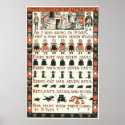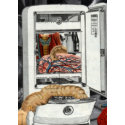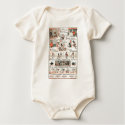Megan J. Elias, historian and author of Stir It Up: Home Economics in American Culture, has a cool post over at her publisher's blog titled: A Depression Era Recipe for Today's Troubled Consumer:
A century ago, a movement arose in America to give ordinary people the kind of power over their everyday lives that they now seem to have surrendered to marketing firms. Biologists and chemists joined sociologists, psychologists, and economists to look at the humdrum of family budgets, daily meals, and intergenerational relations. They sought to understand the connections between all the little things that make up the domestic sphere and the wider world.What the author is speaking of, of course, is home economics.
Thanks to the home economics movement, rural homemakers learned to make low-cost improvements to their houses. Schoolchildren went on field trips to supermarkets to see what a dollar could buy. In government laboratories researchers worked out the "irreducibles" of the human diet. At every turn, home economists exhorted their audience to make the most out of the least. Buy cheap cuts of meat; use all your leftovers; maximize space in the house you already live in; remake last winter's coat into jackets for the kids; find entertainment and happiness at home.That was until the 1920's, when prosperity came along. Consumer goods production increased, credit was extended, and advertising propelled citizens into buying goods and credit -- the average citizen who once may have found home economics helpful, now eschewed the need for such work. Ah, but then the Great Depression struck.
Home economists, likely with a tsk-tsk, once again took on the challenges:
They sprang into action, working through public relief agencies to teach the nearly lost arts of canning and mending and to remind families under severe stress how to work together. For the desperately poor, home economists even invented a new food, the quaintly named Milkorno, developed by food scientists at Cornell University. The "milk-os" (there were also milkwheato and milkoato) included a mix of grain flours and powdered skim milk that could provide a meal's worth of nutrients.At this blog post there is a recipe for Milkorno Polenta with Tomato Sauce -- and you'll find more recipes at the Cornell University Library website, where they have this to say:
A research team led by Flora Rose developed Milkorno, Milkoato, and Milkwheato cereals in the early 1930s. Nutritious and also inexpensiveI'm off to look for more on the "milk-os"; so expect them to appear here again. *wink*
initially the cereal was sold exclusively to the Federal Emergency Relief Administration for distribution to Americans impoverished by the Depression. Home economists claimed that by substituting Milkorno for flour and cornmeal, a family of five could eat on less than five dollars a week.




















0 comments:
Post a Comment